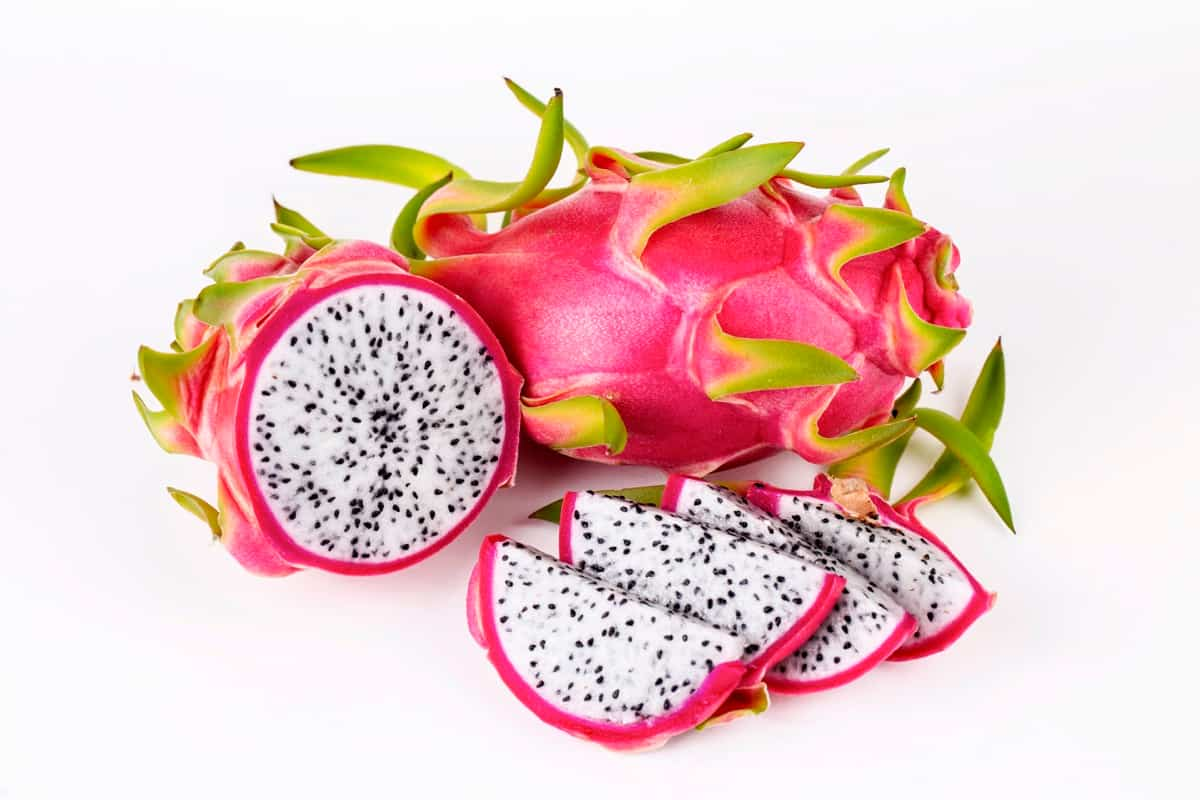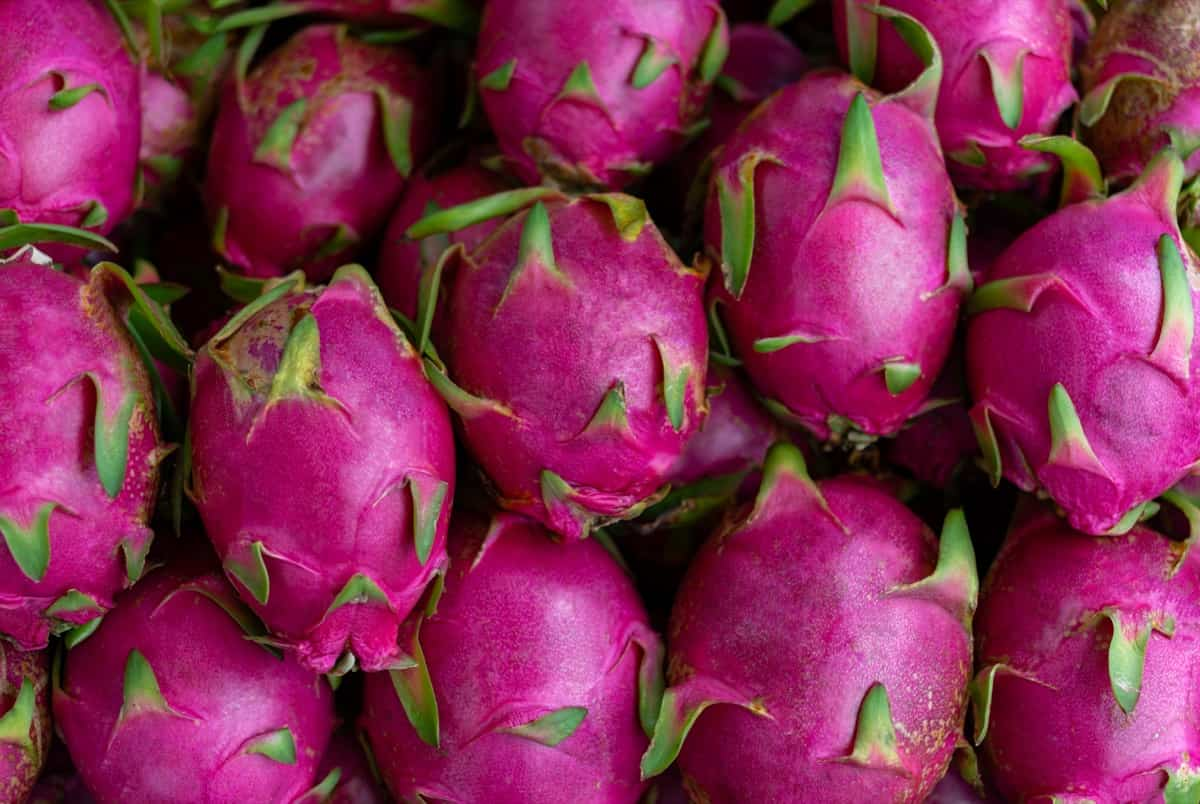Companion planting is a time-tested gardening technique that strategically places compatible plants near your dragon fruit to enhance growth, deter pests, and promote overall garden health. In this guide, you’ll learn about the benefits of companion planting, including improved pollination, natural pest control, and maximized space utilization.

We’ll explore the ideal companion plants for dragon fruits, such as nitrogen-fixing legumes, aromatic herbs, and flowering species that attract pollinators. Discover how to create a symbiotic relationship between these plants and your dragon fruit, unlocking the full potential of your garden while minimizing the need for chemical interventions.
Companion Planting with Dragon Fruits
Nitrogen-Fixing Companion Plants for Dragon Fruits: Boosting Soil Fertility Naturally
Legumes like beans and clover are excellent choices, as they house nitrogen-fixing bacteria in their roots. This symbiotic relationship enriches the soil with nitrogen, a crucial nutrient for plant growth. When interplanted with dragon fruits, legumes improve soil quality, resulting in healthier vines and increased fruit production. Additionally, their ground cover helps retain moisture, reducing water stress. This sustainable and eco-friendly approach to soil enhancement promotes a balanced and nutrient-rich environment, ultimately leading to more robust and fruitful dragon fruit plants.
Herbs as Companion Plants for Dragon Fruits: Repelling Pests and Attracting Beneficial Insects
Strategically choosing herbs as companion plants for dragon fruits can deter pests and attract beneficial insects, promoting a healthier ecosystem. Herbs like basil and mint emit strong fragrances that naturally repel common garden pests, such as aphids and ants, reducing the need for chemical pesticides. They also serve as a culinary bonus. Meanwhile, flowering herbs like oregano, thyme, and rosemary entice beneficial insects like pollinators and predatory wasps, which help control unwanted pests. This synergistic approach not only safeguards the dragon fruit crop but also supports biodiversity and the overall vitality of the garden.
Flowering Plants as Companion Plants for Dragon Fruits: Attracting Pollinators and Deterring Harmful Insects
Blooms such as lavender, marigolds, and sunflowers serve as a visual invitation to bees, butterflies, and other essential pollinators. Their vibrant colors and sweet nectar draw these creatures to your garden, boosting dragon fruit pollination and fruit set. Simultaneously, the strong scents of these flowers can deter harmful insects, like aphids and mealybugs, due to their repellent properties. This dual function of companion flowers creates a harmonious environment that enhances fruit production and reduces the need for chemical pest control measures.
In case you missed it: Managing Weeds in Dragon Fruit Farms: Strategies and Techniques

Vegetables as Companion Plants for Dragon Fruits: Maximizing Space and Nutrient Utilization
Grow climbing veggies like cucumbers and beans on trellises near the dragon fruit. This shared vertical space ensures efficient use of garden real estate. Additionally, cucumbers and beans, being nitrogen-fixing plants, enrich the soil with essential nutrients. Their leafy canopy provides shade, shielding the dragon fruit from excessive sun and promoting a cooler microclimate. This dual-purpose approach maximizes space, encourages soil health, and enhances dragon fruit and vegetable yields while fostering a balanced, thriving garden ecosystem.
Beneficial Ground Covers for Dragon Fruits: Suppressing Weeds and Conserving Moisture
Employing beneficial ground covers around dragon fruit plants is essential for weed suppression and moisture conservation. Utilize options like low-growing plants such as creeping thyme or clover to create a protective barrier against invasive weeds. These ground covers also help regulate soil temperature and retain moisture by reducing evaporation. Conserving moisture is crucial in regions with limited rainfall or during dry spells. By preventing weed competition and sustaining the soil’s moisture levels, these ground covers ensure dragon fruit plants receive the resources they need for healthy growth.
Companion Plants for Dragon Fruits: Providing Shade and Wind Protection
Select companion plants with shade and wind protection to support dragon fruit growth. Tall, sturdy crops like corn or sunflowers can act as natural windbreaks, shielding dragon fruit tree structures from strong gusts. In addition, consider planting larger trees or shrubs on the windward side of your dragon fruit garden to reduce wind exposure further. This safeguards the delicate dragon fruit stems and creates a more stable microclimate, reducing plant stress and promoting successful fruit production.
Companion Plants for Dragon Fruits: Enhancing Soil Drainage and Aeration
Deep-rooted crops like daikon radishes or cover crops such as buckwheat help break up compacted soil and enhance aeration. These plants improve water penetration, reduce the risk of waterlogged roots, and encourage beneficial microorganism activity in the soil. Promoting a well-drained and aerated root zone creates optimal conditions for dragon fruit growth, root development, and overall plant health, ultimately leading to a more productive and resilient garden.
In case you missed it: How to Prepare the Soil for Dragon Fruit Cultivation

Companion Plants for Dragon Fruits: Natural Pest Control and Disease Prevention
Herbs like rosemary and basil release aromatic compounds that deter harmful insects, reducing the need for chemical pesticides. Additionally, marigolds and nasturtiums repel nematodes and other soil-borne pests. Planting alliums such as garlic and onions can help deter fungal diseases. These companion plants create a protective buffer, fostering a healthier ecosystem around dragon fruit vines. By reducing pest pressure and preventing diseases, you enhance fruit quality and yield while promoting a more sustainable and eco-friendly gardening approach.
Companion Plants for Dragon Fruits: Attracting Birds for Pest Control
Encourage bird visitors to aid in pest control around dragon fruit plants by planting companion flowers and shrubs that attract them. Sunflowers, elderberries, and native plants are excellent choices for this purpose. Birds like sparrows, finches, and wrens feed on insects and caterpillars, helping to keep pest populations in check. These feathered allies contribute to a healthier garden ecosystem and reduce the need for chemical pest management. By creating an environment that entices pest-controlling birds, you can naturally enhance dragon fruit health and productivity.
What Can I Plant Next To Dragon Fruit?
When planting next to dragon fruit, consider companion plants like nitrogen-fixing legumes (e.g., beans), aromatic herbs (e.g., basil and mint), and flowering species (e.g., marigolds and sunflowers) to improve soil quality, deter pests, and attract pollinators for a thriving and harmonious garden.
In case you missed it: Essential Tools and Equipment for Dragon Fruit Farming

Conclusion
Incorporating companion plants with dragon fruits is a harmonious approach with many benefits. From pollinator attraction to natural pest control, nitrogen fixation, and soil improvement, carefully selected companion species enhance dragon fruit gardens’ overall health and productivity. This ecological synergy optimizes space and fosters a sustainable and thriving ecosystem, resulting in bountiful and healthy dragon fruit yields.
- Feed Your Flock for Less: Top 10 Tips to Save on Chicken Feed
- Ultimate Guide to Ossabaw Island Hog: Breeding, Raising, Diet, and Care
- Hatching Answers: The Top 10 Reasons Your Chickens Aren’t Laying Eggs
- Eggs and Economics: Breaking Down the Cost of Raising Backyard Chickens
- Defend Your Greens: Proven Methods to Keep Iguanas Out of Your Garden
- Ultimate Guide to Cinnamon Queen Chicken: A Comprehensive Guide for Beginners
- Ultimate Guide to California Tan Chicken: Breeding, Raising, Diet, Egg-Production and Care
- Ultimate Guide to Marsh Daisy Chicken: Breeding, Raising, Diet, and Care
- 10 Types of Chicken Farming Businesses You Can Start for Profits